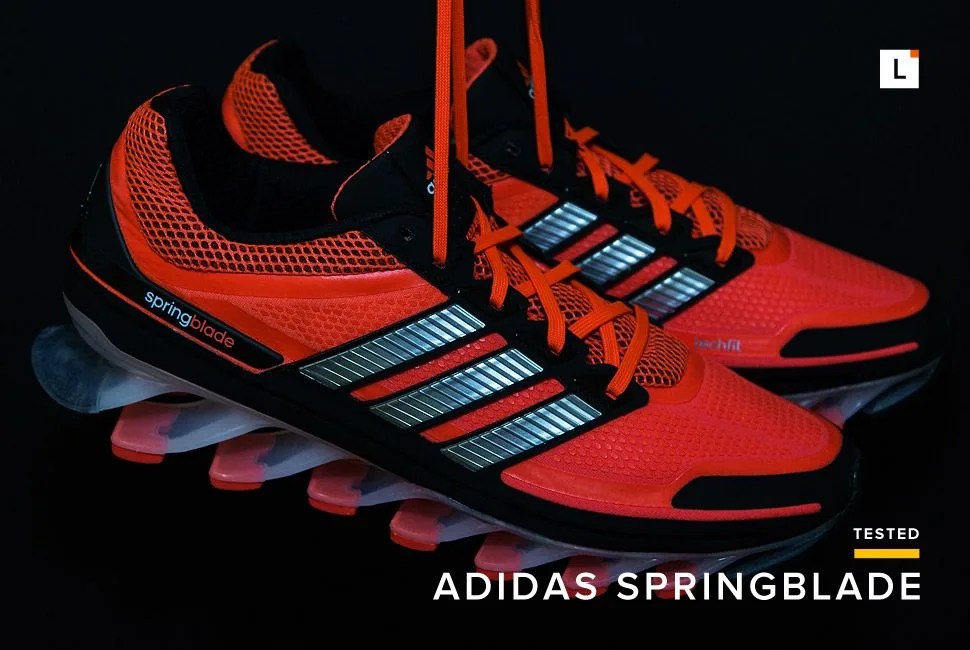You’ve got to hand it to Adidas: while the leading edge of innovation for most running companies is minimalist footwear with the occasional proprietary shank to keep things moving forward, in the Adidas Springblade ($180) the company has made a running shoe that artfully combines the looks and swiftness of a Ferrari with… I don’t know, a lionfish? Steven Seagal in Glimmer Man? Charlemagne’s Joyeuse?
MORE HANDS-ON REVIEWS: eFlow E3 Nitro Bicycle | Goal Zero Solar | Suunto Ambit2 S
The Springblade is a 13.1-ounce (size 9, as tested, though it came in at 12.4 on our scale) running shoe with a breathable, sock-like upper and, eschewing the typical EVA midsole, 16 forward-angled blades made from a high-tech polymer. The idea is that these blades compress and release energy, propelling the runner forward. According to Adidas’ description of the shoes, “Each blade is precisely tuned in geometry, thickness and position for each phase of a runner’s stride to provide support and a full range of movement”. The Springblade is also seven times more temperature-resistant than shoes with Adidas’ standard EVA cushioning, which is good because runny blades would be a real race-ender.
This is a good time to talk about innovation. Like it or not, the Springblade is different from anything else out there right now, but not a huge departure from other forward-thinking shoes that have been produced. Paraphrasing, the arc of contemporary running shoe design starts with leather track spikes, the Foster’s Running Pumps worn by British Olympians Eric Liddell and Harold Abrahams in 1924 (profiled in the movie Chariots of Fire), and continues today with pretty much everything imaginable, but mainly simple shoes that prioritize unobtrusiveness and are lightweight and minimally supportive — not so different from the original spikes.
Is it an indulgence or a step forward in running shoe innovation?
Along the way, there have been lots of attempts to maximize energy return (and increase comfort); indeed, this is the raison d’etre of Adidas’ other technology released in 2013, Boost, which uses granules of thermoplastic polyurethane (TPU) to improve cushion and increase responsiveness, and will be likely be incorporated in all of their shoes that use EVA. Other innovations with the same goal have seemed eccentric: Nike introduced Air shoes in the ‘70s; Asics was the first to use gel cushioning in the ‘80s; Reebok added Pump technology to running shoes in the ‘90s. These were fat times. Where this innovation has survived, it has been trimmed and perfected; otherwise, it’s been relegated to special editions and novelty shoes.
So this is the question for the Springblade: is it an indulgence or a step forward in running shoe innovation? And f*ck me if I’m the right guy to review them. I swear by minimalist shoes, for the sole reason that switching to less structured shoes seems to have corrected chronic knee and hip pain that used to haunt my running. But I am a fan of Adidas; one of my favorite pairs of shoes was the old version of the Adios, and I finished Ironman wearing the Feather 2.0.
